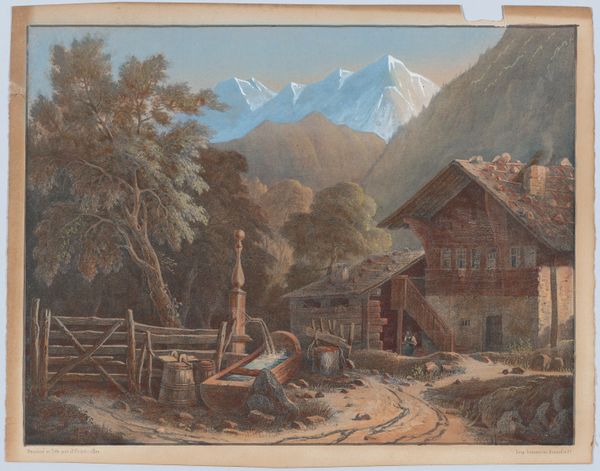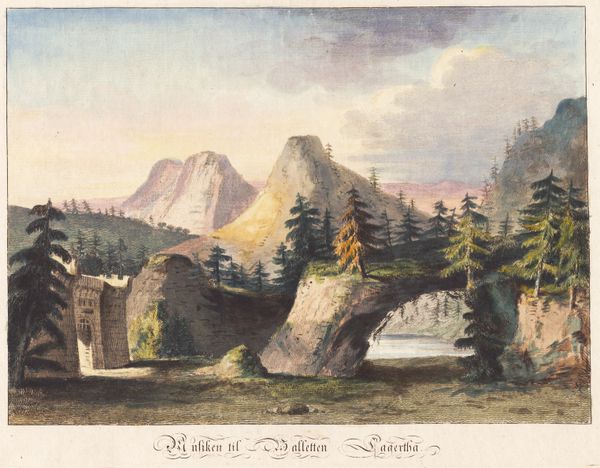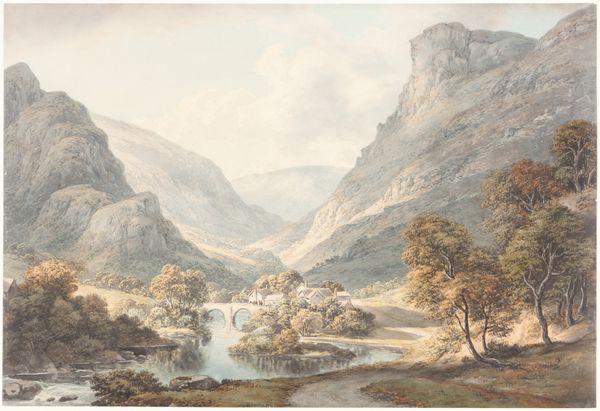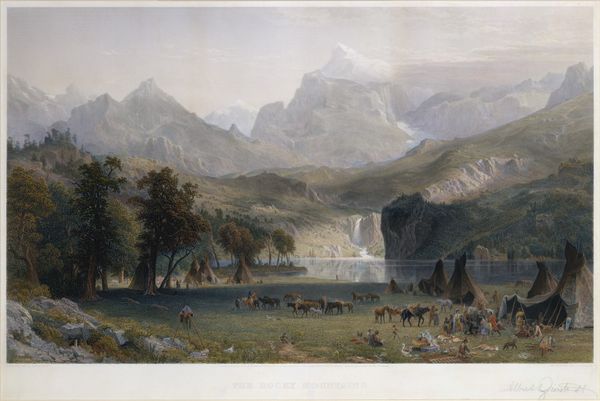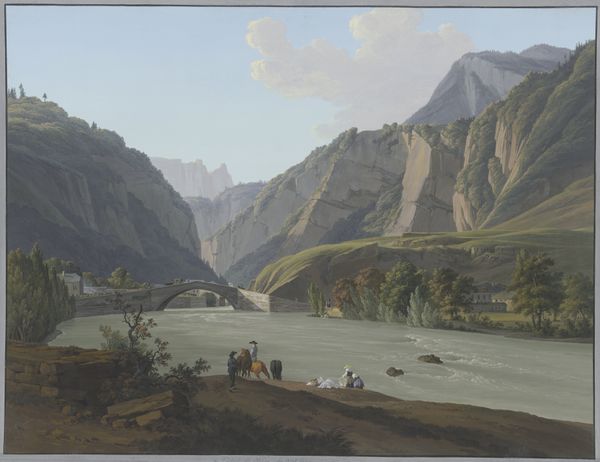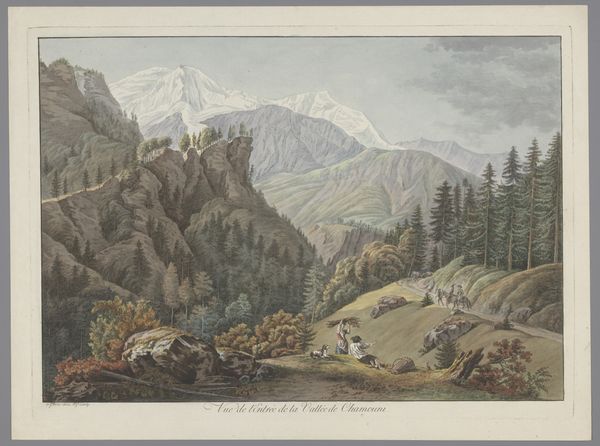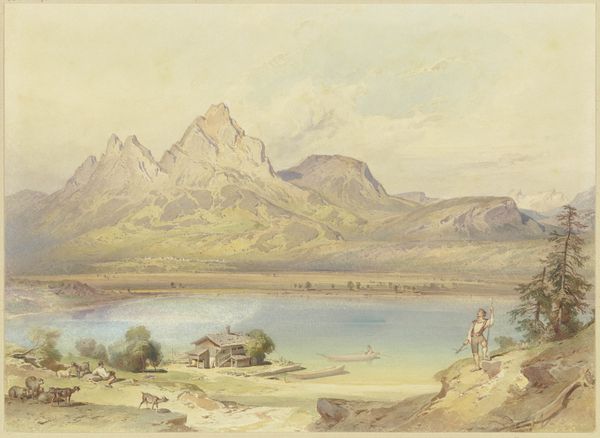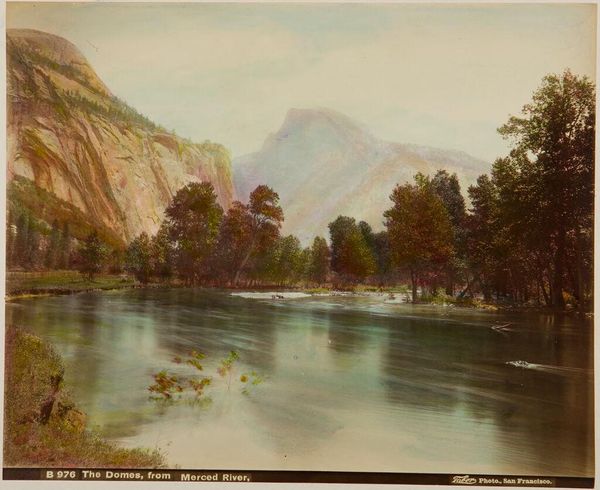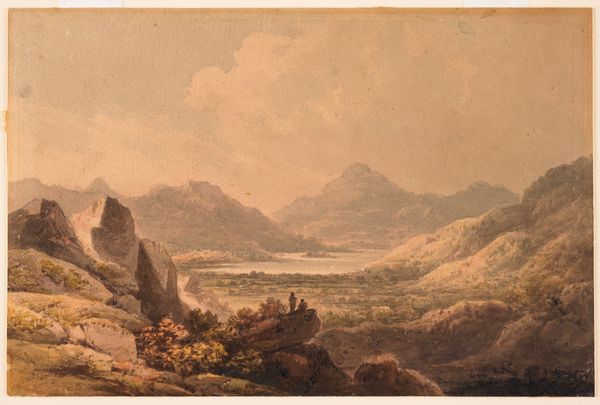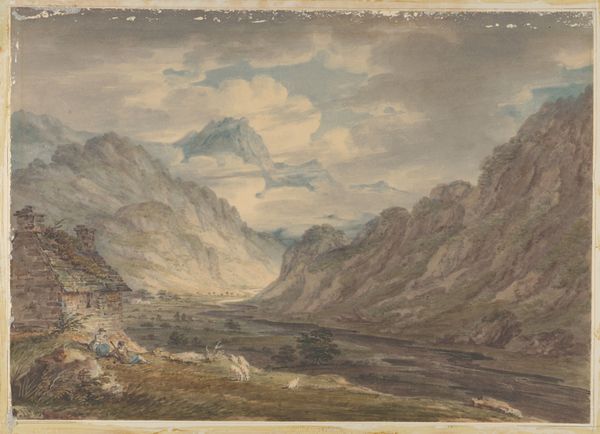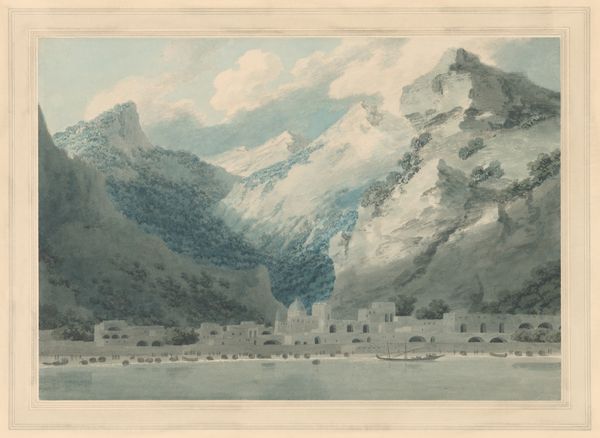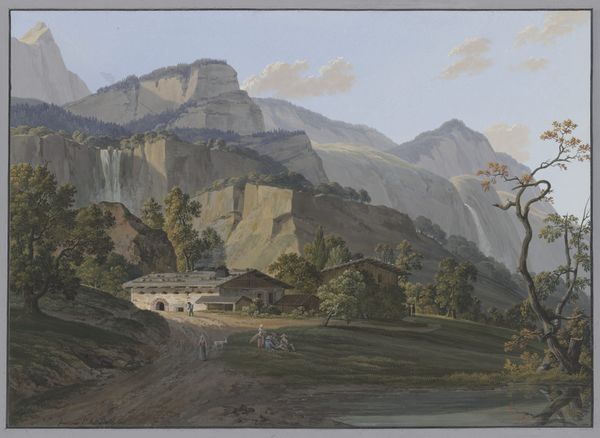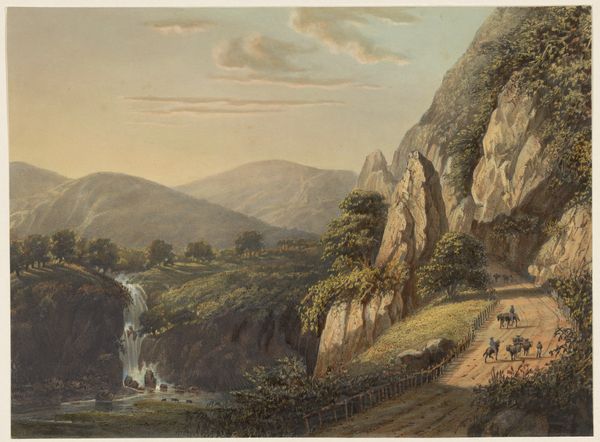
tempera, painting, fresco, watercolor
#
neoclacissism
#
tempera
#
painting
#
landscape
#
fresco
#
oil painting
#
watercolor
#
romanticism
#
natural-landscape
Copyright: Public domain
Curator: This is Joseph Anton Koch's "Lauterbrunnental Nach Norden," painted in 1794, a tempera work that offers us a carefully constructed view of the Swiss Alps. Editor: It feels quite serene, doesn't it? Almost like a stage set. The imposing cliffs on the left and the gentle valley create such a stark contrast; I immediately feel drawn into a specific kind of picturesque world. Curator: Absolutely. Koch was deeply involved with the Neoclassical movement, but we also see hints of early Romanticism in his landscapes. There’s an emphasis on order, but also on the sublimity of nature. The politics of landscape were emerging during this period, especially as ideas around nationhood and the concept of a national aesthetic identity started to circulate more widely. The depiction of “untouched” nature fed into a collective, though largely imagined, past. Editor: And these scenes rarely exist without social elements. See the tiny figures near the bridge? They serve to heighten the grandeur of the landscape. There’s this delicate dance between the power of nature and humanity’s small place within it, a relationship charged by socio-political meaning as much as spiritual appreciation. The sublime, after all, doesn’t just exist in nature; it is co-created. Curator: Precisely. Koch's careful arrangements evoke a sense of timelessness, masking, or perhaps sublimating, the complex political realities of the late 18th century, when Europe was on the cusp of revolutionary change. These serene visions gave form to emerging aesthetic, spiritual, and political attitudes. Koch would continue his artistic career largely in Rome from 1795 onward and exert considerable influence as a landscape painter and printmaker. Editor: Considering our own fraught moment in history, reflecting on landscape and representation becomes even more pertinent. How can we look critically at our current landscape imagery – the picturesque scenes shared on social media – through similar frameworks? Whose version of paradise gets broadcast and why? I think that this scene pushes us to challenge romanticized views of places and consider broader socio-political and historical landscapes of experience. Curator: It’s important for us to view the scene critically in context and remember its contemporary meaning and significance. Editor: Koch's work offers such rich avenues for exploration and thought—I hope our listeners find the imagery here as inspiring as I do!
Comments
No comments
Be the first to comment and join the conversation on the ultimate creative platform.
